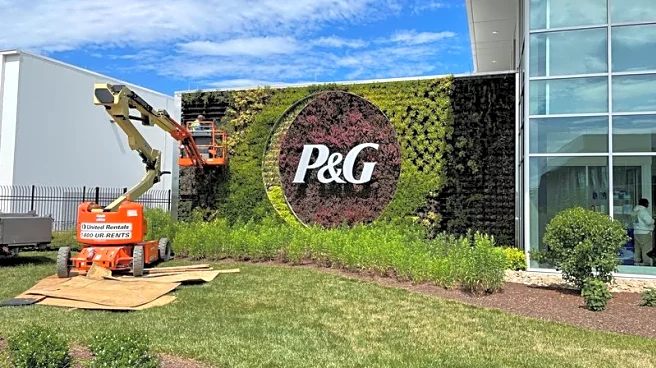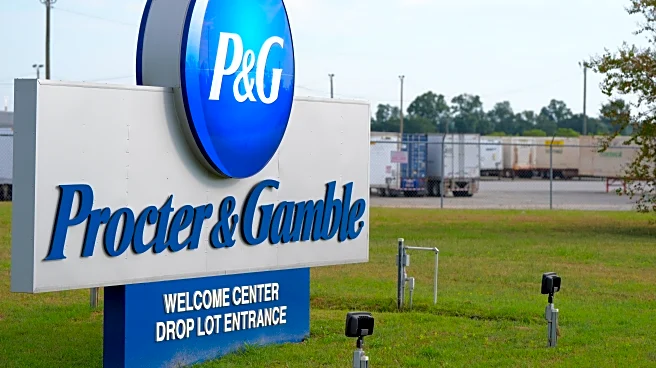What's Happening?
Procter & Gamble has reported its fiscal first-quarter earnings, surpassing Wall Street expectations with adjusted earnings of $1.99 per share on revenue of $22.39 billion. This performance exceeded analysts'
predictions of $1.90 per share on revenue of $22.18 billion. The company experienced a 6% sales increase in its beauty segment, which includes brands like Head & Shoulders and Olay, and a 5% rise in grooming sales featuring Braun and Gillette. Despite the positive earnings, P&G anticipates tariffs will result in $400 million in after-tax costs for fiscal 2026, a reduction from the previously forecasted $800 million. The company had earlier announced price increases on a quarter of its U.S. products due to higher costs from tariffs imposed by President Trump.
Why It's Important?
The strong earnings report from Procter & Gamble highlights the company's resilience in navigating tariff-related challenges and maintaining growth across its product segments. The reduction in expected tariff costs is significant for the company's financial outlook, potentially easing pressure on profit margins. This development is crucial for stakeholders, including investors and consumers, as it may influence pricing strategies and product availability. The company's ability to adapt to changing economic conditions and regulatory impacts underscores its strategic management and market positioning.
What's Next?
Procter & Gamble continues to anticipate fiscal full-year earnings between $6.83 and $7.09 per share, maintaining its guidance for sales growth of 1% to 5%. The company is likely to focus on mitigating tariff impacts through strategic sourcing and product innovation. Stakeholders will be watching for further announcements regarding tariff negotiations and potential changes in trade policies that could affect P&G's operations and financial performance.
Beyond the Headlines
The ongoing tariff situation presents broader implications for international trade relations and economic policies. P&G's experience may serve as a case study for other companies facing similar challenges, highlighting the importance of strategic planning and adaptability in a volatile economic environment.













